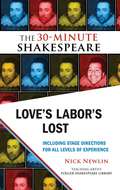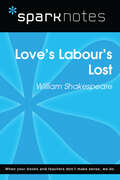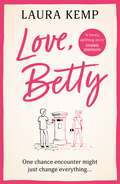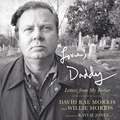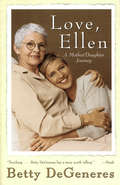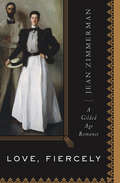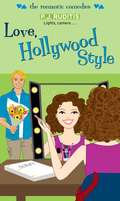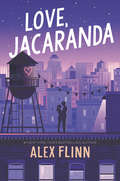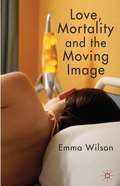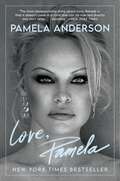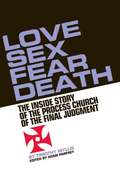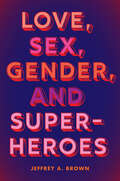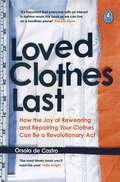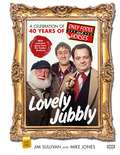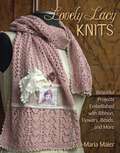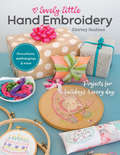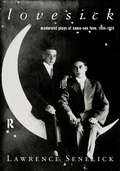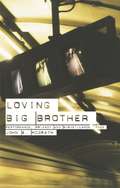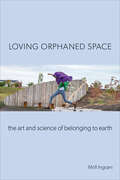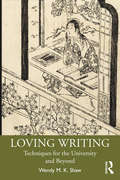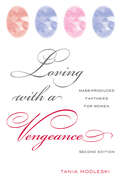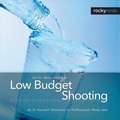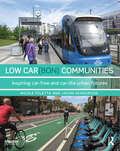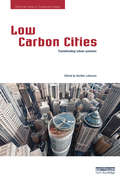- Table View
- List View
Love's Labor's Lost: The 30-Minute Shakespeare
by Nick NewlinLove's Labor's Lost: The 30-Minute Shakespeare plays three action-packed scenes from this tale of King Navarre and his three lords, who have vowed to retire from women for three years. Naturally, the Princess of France and her three ladies arrive, and comedic courtship ensues.The cutting includes the ridiculous dance of the lords disguised as Russians, the hysterical "Pageant of the Nine Worthies," and a dramatic, bittersweet ending that leaves the King and the three lords laboring for love.The edition includes a preface by Nick Newlin containing helpful advice on how to put on a Shakespeare performance in a high school class with novice actors, as well as an appendix with suggestions for the specific play and recommendations for further resources.
Love's Labours Lost (SparkNotes Literature Guide Series)
by SparkNotesLove's Labours Lost (SparkNotes Literature Guide) by William Shakespeare Making the reading experience fun! Created by Harvard students for students everywhere, SparkNotes is a new breed of study guide: smarter, better, faster. Geared to what today's students need to know, SparkNotes provides: *Chapter-by-chapter analysis *Explanations of key themes, motifs, and symbols *A review quiz and essay topicsLively and accessible, these guides are perfect for late-night studying and writing papers
Love, Betty: The heartwarming and uplifting summer read for 2022 you don’t want to miss!
by Laura Kemp'Playful and joyous and packed with Laura's gentle warmth and wicked humour. Loved it!' MILLY JOHNSON'A lovely, uplifting story' DEBBIE JOHNSON'Laura Kemp's signature warmth shines through to create a book that is like a big, warm cwtch' DARCIE BOLEYN'Warmed my heart, flipped my tummy and dampened my eyes. Lovely!' JO CLEGGOne chance encounter might just change everything...On the day that Betty meets Guy, her life is changed forever. She never thought she'd see him again, but a few months later, realizes she has something of his that needs returning... So, she writes him a letter. It's the perfect solution for Betty - it means she doesn't need to tell Guy about what really happened that day, and the secret she's been hiding. For Guy, Betty's letter arrives at his repair shop at the perfect time. His whole world has come crashing down around him and for the first time in a long time, he starts to feel hopeful. But can you really begin to fall in love with someone you've only met once...?
Love, Daddy: Letters from My Father
by Willie Morris David Rae MorrisWinner of the 2023 Mississippi Institute of Arts and Letter Award for PhotographyLove, Daddy: Letters from My Father examines the complexities of father-and-son relationships through letters and photographs. Willie Morris wrote scores of letters to his only son, David Rae Morris, from the mid-1970s until Willie’s death in 1999. From David Rae’s perspective, his father was often emotionally disconnected and lived a peculiar lifestyle, often staying out carousing well into the night. But Willie was an eloquent and accomplished writer and began to write his son long, loving, and supportive letters when David Rae was still in high school. An aspiring photographer, David Rae was confused and befuddled by his father’s warring personalities and began photographing Willie using the camera as a buffer to protect him and his emotions. The collection begins in early 1976 and continues for more than twenty years as David Rae moved about the country, living in New York, Massachusetts, Texas, Mississippi, Tennessee, and Minnesota, before finally settling in Louisiana. “All the while my father was writing to me I somehow managed to save his letters,” David Rae writes. “I left them in storage and in boxes and in piles of clutter on desks and in basements. They were kind, offering a love that he found difficult to express openly and directly. He simply was more comfortable communicating through letters.” The letters cover topics ranging from writing, the weather, Willie’s return to Mississippi in 1980, the Ole Miss football season, and local town gossip to the fleas on the dog to just life and how it’s lived. Likewise, the photographs are portraits, documentary images of daily life, dinners, outings, and private moments. Together they narrate and illuminate the complexities of one family relationship, and how, for better or worse, that love endures the passage of time.
Love, Ellen: A Mother/Daughter Journey
by Betty DeGeneres"Mom, I'm gay." With three little words, gay children can change their parents' lives forever. Yet at the same times it's a chance for those parents to realize nothing, really, has changed at all; same kid, same life, same bond of enduring love.Twenty years ago, during a walk on a Mississippi beach, Ellen DeGeneres spoke those simple, powerful words to her mother. That emotional moment eventually brought mother and daughter closer than ever, but not without a struggle. Coming from a republican family with conservative values, Betty needed time and education to understand her daughter's homosexuality -- but her ultimate acceptance would set the stage for a far more public coming out, one that would change history.In Love, Ellen, Betty DeGeneres tells her story; the complicated path to acceptance and the deepening of her friendship with her daughter; the media's scrutiny of their family life; the painful and often inspiring stories she's heard on the road as the first non-gay spokesperson for the Human Rights Campaigns National Coming Out Project.With a mother's love, clear minded common sense, and hard won wisdom, Betty DeGeneres offers up her own very personal memoir to help parents understand their gay children, and to help sons and daughters who have been rejected by their families feel less alone.
Love, Fiercely: A Gilded Age Romance
by Jean ZimmermanThe true story of the New York society couple portrayed in the John Singer Sargent painting—an architect and an heiress who became passionate reformers. Contemporaries of the Astors and Vanderbilts, they grew up together along the shores of bucolic Staten Island, linked by privilege—her grandparents built the world&’s fastest clipper ship, while his family owned most of Murray Hill. Theirs was a world filled with mansions, balls, summer homes, and extended European vacations. This fascinating biography re-creates the glittering world of Edith Minturn and Isaac Newton Phelps Stokes—and reveals how their love for each other was matched by their dedication to others. Newton became a passionate preserver of New York history and published the finest collection of Manhattan maps and views in a six-volume series. Edith became the face of the age when Daniel Chester French sculpted her for Chicago&’s Columbian Exposition, a colossus intended to match the Statue of Liberty&’s grandeur. But beyond their life of prominence and prestige, Edith and Newton battled together on behalf of New York&’s poor and powerless—and through it all, sustained a strong-rooted marriage. From the splendid cottages of the Berkshires to the salons of 1890s Paris, Love, Fiercely tells the real-life story behind Mr. and Mrs. I .N. Phelps Stokes—one of the Gilded Age&’s most famous works of art. &“With an impressive amount of research behind every page, Zimmerman manages to capture the sweeping drama of the turn of the century as well as the compelling story of a couple who knew how to love, fiercely. Her superb pacing and gripping narrative will appeal to all who enjoy history, biography, and real-life romance.&” —Library Journal
Love, Hollywood Style (The Romantic Comedies)
by P.J. RuditisTrue love doesn't always follow a script.... Tracy Vance's love life is a total flop. Sure, she has a cool job as a tour guide at a real Hollywood movie studio, but when it comes to her personal life, she can barely get her crush, Connor, to notice her. Then Tracy gets a brilliant idea: Why not win Connor's heart with some help from the big screen? Taking her cues from her favorite chick flicks, Tracy puts Operation Ro Com into action, and it actually seems to work! But Tracy soon realizes that getting the leading man isn't the same as keeping him. Maybe things never work out like they do in the movies--or do they?
Love, Jacaranda
by Alex FlinnFrom the #1 New York Times bestselling author of Beastly, Alex Flinn, comes a new contemporary novel about one girl’s journey to find her voice and let love in. “A delicious bonbon of a love story.”—New York Times bestselling and award-winning author Nancy Werlin Jacaranda Abbott has always tried to keep her mouth shut. As a foster kid, she’s learned the hard way that the less she talks about her mother and why she’s in jail, the better.But when a video of Jacaranda singing goes viral, a mysterious benefactor offers her a life-changing opportunity—a scholarship to a prestigious boarding school for performing arts. Eager to start over somewhere new, Jacaranda leaps at the chance, and she pours her heart out in emails to the benefactor she’s never met. Suddenly she’s swept up into a world of privilege where the competition is fierce and the talent is next level. As Jacaranda—Jackie to her new friends—tries to find her place, a charming boy from this world of wealth catches her eye. She begins to fall for him, but can he accept her for who she really is?
Love, Mortality and the Moving Image
by Emma WilsonIn their use of home movies, collages of photographs and live footage, moving image artists explore the wish to see dead loved ones living. This study scrutinizes emotions and sensations surrounding mortality and longing. Its focus is on love, tenderness, and eroticism, on the undoing of the self in desire and loss, and on the pursuit of relations with a missing other. In dialogue with Judith Butler on grievability, and Giorgio Agamben on bare life, Emma Wilsontraces connections between imaging of intimate losses and public acts of mourning in response to atrocity, the Shoah and Hurricane Katrina. The book lays out a series of sensitive new readings of works by Agnes Varda, Pedro Almodovar, Ingmar Bergman, Sophie Calle, and many others. Attending to images of tactility, to fine details of texture, light, and affect, it re-imagines the role of the sensuous in lens-based art. "
Love, Pamela: A Memoir
by Pamela AndersonThe actress, activist, and once infamous Playboy Playmate reclaims the narrative of her life in a memoir that defies expectation in both content and approach, blending searing prose with snippets of original poetry.In this honest, layered and unforgettable book that alternates between storytelling and her own poetry, Pamela Anderson breaks the mold of the celebrity memoir while taking back the tale that has been crafted about her.Her blond bombshell image was ubiquitous in the 1990s. Discovered in the stands of a football game, she was immediately rocket launched into fame, becoming Playboy’s favorite cover girl and an emblem of Hollywood glamour and sexuality. But what happens when you lose grip on your own life—and the image the notoriety machine creates for you is not who you really are?Growing up on Vancouver Island, the daughter of young, wild, and unprepared parents, Pamela Anderson’s childhood was not easy, but it allowed her to create her own world—surrounded by nature and imaginary friends. When she overcame her deep shyness and grew into herself, she fell into a life on the cover of magazines, the beaches of Malibu, the sets of movies and talk shows, the arms of rockstars, the coveted scene at the Playboy Mansion. And as her star rose, she found herself tabloid fodder, at the height of an era when paparazzi tactics were bent on capturing a celebrity’s most intimate, and sometimes weakest moments. This is when Pamela Anderson lost control of her own narrative, hurt by the media and fearful of the public’s perception of who she was…and who she wasn’t.Fighting back with a sense of grace, fueled by a love of art and literature, and driven by a devotion to her children and the causes she cares about most, Pamela Anderson has now gone back to the island where she grew up, after a memorable run starring as Roxie in Chicago on Broadway, reclaiming her free spirit but also standing firm as a strong, creative, confident woman.
Love, Sex, Fear, Death
by Timothy Wyllie Adam ParfreyThe Process Church of the Final Judgment was the apocalyptic shadow side of the flower-powered '60s and perhaps the most notorious cult of modern times.Hundreds of black-cloaked devotees, often wearing a satanic "Goat of Mendes" and a swastika-like mandala, swept the streets of London, New York, Boston, Chicago, New Orleans, and Toronto, selling magazines and books with titles like Fear and Humanity is the Devil. And within the group's "Chapters," members would participate in "Midnight Meditations" beneath photographs of the Christ-like leader.Celebrities like Marianne Faithful, James Coburn, and Mick Jagger participated in Process publications, and Funkadelic, in its Maggot Brain album, reprinted Process' "Fear Issue."Process' "Death Issue" interviewed the freshly-imprisoned Charles Manson leading to conspiracy hysteria in such books as Ed Sanders' The Family and Maury Terry's The Ultimate Evil. A lawsuit against Sanders' Manson book led to the removal of its Process-themed chapter by Dutton.Love, Sex, Fear, Death is the shocking, surprising, and secretive inside story of The Process Church, which was later transformed into Foundation Faith of the Millennium, and most recently as the Utah-based animal sanctuary, Best Friends.Included will be text by Timothy Wyllie, a formative member of the Process and Foundation Faith organizations; interviews with other former Processeans; rare reproductions of Process magazines; never-before-seen photographs; and fascinating transcripts from holy books and legal actions.The special limited edition will be hardcover, signed, numbered, and slipcased, and it will include a facsimile edition of the notorious "Death Issue."
Love, Sex, Gender, and Superheroes: Photogenic French Literature And The Prehistory Of Cinematic Modernity
by Jeffrey A. BrownImpossibly muscular men and voluptuous women parade around in revealing, skintight outfits, and their romantic and sexual entanglements are a key part of the ongoing drama. Such is the state of superhero comics and movies, a genre that has become one of our leading mythologies, conveying influential messages about gender, sexuality, and relationships. Love, Sex, Gender, and Superheroes examines a full range of superhero media, from comics to films to television to merchandising. With a keen eye for the genre’s complex and internally contradictory mythology, comics scholar Jeffrey A. Brown considers its mixed messages. Superhero comics may reinforce sex roles with their litany of phallic musclemen and slinky femme fatales, but they also blur gender binaries with their emphasis on transformation and body swaps. Similarly, while most heroes have heterosexual love interests, the genre prioritizes homosocial bonding, and it both celebrates and condemns gendered and sexualized violence. With examples spanning from the Golden Ages of DC and Marvel comics up to recent works like the TV series The Boys, this study provides a comprehensive look at how superhero media shapes our perceptions of love, sex, and gender.
Loved Clothes Last: How the Joy of Rewearing and Repairing Your Clothes Can Be a Revolutionary Act
by Orsola de Castro'It's important that everyone with an interest in fashion reads this book so we can live on a healthier planet' Arizona Muse 'The most timely book you'll read this year' India Knight* * * * * Running out of space for the clothes you can't stop buying? Curious about how you can make a difference to the environmental challenges our planet faces? Join Orsola's care revolution and learn to make the clothes you love, last longer.This book will equip you with a myriad of ways to mend, rewear and breathe new life into your wardrobe to achieve a more sustainable lifestyle. By teaching you to scrutinise your shopping habits and make sustainable purchases, she will inspire you to buy better, care more and reduce your carbon footprint by simply making your loved clothes last longer.Following Orsola's practical tips to lavish care and attention on the clothes you already own will not only have a positive environmental impact, but will be personally rewarding too: hand wash, steam and spot clean your clothes, air dry instead of tumble drying, or revive your clothes by sewing or crocheting.Fast fashion leaves behind a trail of human and environmental exploitation. Our wardrobes don't have to be the finish line; they can be a starting point. We can all care, repair and rewear. Do you accept the challenge?* * * * *'An incredibly thoughtful, must-read guide' Kenya Hunt'A must read for anyone who wants to understand the fashion industry as an outsider and wants direction as to where we go next' Aja Barber
Lovely Jubbly: A Celebration of 40 Years of Only Fools and Horses
by Jim Sullivan Mike Jones** The No. 11 Top Ten Sunday Times Bestseller **Long Live Hookey Street ...Ménage et trois! It's been 40 years since John Sullivan's Only Fools and Horses first graced our television screens. In this new official guide, packed full of rare and never-before-seen photographs, Mike Jones and Jim Sullivan - son of John and co-writer of the hit West End show Only Fools and Horses the Musical - chart the creation and evolution of the nation's favourite comedy series. Including behind-the-scenes info and interviews with those who helped make the show a success, and more than a word or two from Del, Rodders and the rest of the Peckham faithful, here we take an episode-by-episode look at what made Only Fools and Horses work.Lovely Jubbly!
Lovely Lacy Knits
by Eva-Maria MaierGorgeously soft and romantic, the beautiful lacy knits in this book beg to be touched and worn against the skin. These unique, feminine pieces, embellished with photos, beads, and other accents, will be the focal point of any outfit.Delicate lace knit patterns for scarves, shawls, fingerless gloves, slippers, and socksLearn to use a variety of embellishment techniques, including sewn and beaded accents, to give your knits personalized flairProjects for a wide range of skill levels
Lovely Little Hand Embroidery: Projects for Holidays & Every Day
by Shirley Hudson“Charming . . . Hudson’s compilation will appeal to the beginner embroiderer with a yen for the ‘quick, simple, and easy.’” —Publishers WeeklyCapture the magic of holidays (and every day!) with 30 hand-embroidery projects. Starting with simple stitches, you’ll add sweet sayings and motifs to home decor and gifts. Sew up country-cute pincushions, modern mug rugs, vintage-inspired pillows, and more! Whether you’re refreshing your home decor or sharing meaningful handmade gifts with a friend, you’ll love how quick and easy it is to sew up seasonal designs for each month of the year.Small, quick, and easy hand-embroidery projects to stitch all year longBring meaning to the holidays! 30 seasonal projects to sew and shareCheerful illustrations to take your vintage-modern handmades to another level“The projects in the book are really cute and follow a season/special occasions theme. There’s something for each month, two projects for birthdays and a few extra . . . I think the book is worth it just for the cute little designs for the pincushions . . . If you’re someone who has friends that would enjoy a little quick gift, these are so perfect. The ‘Pinkeep’ I adore. The ‘Courage’ one would be great if you know anyone dealing with cancer or other hard life events.” —Jo’s Country Junction
Lovesick: Modernist Plays of Same-Sex Love, 1894-1925
by Laurence SenelickThis volume makes available an international collection of plays, from Britain, the US, Germany, France and Russia, providing an essential and fascinating resource for anyone interested in the theatre culture of this period. Lovesick brings together six plays, each with individual introductions, including an author biography and a production history. The editor provides a contextual introduction to the volume offering valuable information about the ancestry of gay theatre and queer performance. The anthology reveals how 'sexual deviance' made its way into the drama of this time, and also how homosexual playwrights used comic or lyrical devices in order to celebrate a 'superior sensibility'.
Loving Big Brother: Surveillance Culture and Performance Space
by John McGrathIn Loving Big Brother the author tackles head on the overstated claims of the crime-prevention and anti-terrorism lobbies. But he also argues that we desire and enjoy surveillance, and that, if we can understand why this is, we may transform the effect it has on our lives. This book looks at a wide range of performance and visual artists, at popular TV shows and movies, and at our day-to-day encounters with surveillance, rooting its arguments in an accessible reading of cultural theory. Constant scrutiny by surveillance cameras is usually seen as - at best - an invasion of privacy, and at worst an infringement of human rights. But in this radical new account of the uses of surveillance in art, performance and popular culture, John E McGrath sets out a surprizing alternative: a world where we have much to gain from the experience of being watched. This iconoclastic book develops a notion of surveillance space - somewhere beyond the public and the private, somewhere we will all soon live. It's a place we're just beginning to understand.
Loving Orphaned Space: The Art and Science of Belonging to Earth
by Mrill IngramHow we relate to orphaned space matters. Voids, marginalia, empty spaces—from abandoned gas stations to polluted waterways—are created and maintained by politics, and often go unquestioned. In Loving Orphaned Space, Mrill Ingram provides a call to action to claim and to cherish these neglected spaces and make them a source of inspiration through art and/or remuneration. Ingram advocates not only for “urban greening” and “green planning,” but also for “radical caring.” These efforts create awareness and understanding of ecological connectivity and environmental justice issues—from the expropriation of land from tribal nations, to how race and class issues contribute to creating orphaned space. Case studies feature artists, scientists, and community collaborations in Chicago, New York, and Fargo, ND, where grounded and practical work of a fundamentally feminist nature challenges us to build networks of connection and care. The work of environmental artists who venture into and transform these disconnected sites of infrastructure allow us to rethink how to manage the enormous amount of existing overlooked and abused space. Loving Orphaned Space provides new ways humans can negotiate being better citizens of Earth.
Loving Orphaned Space: The Art and Science of Belonging to Earth
by Mrill IngramHow we relate to orphaned space matters. Voids, marginalia, empty spaces—from abandoned gas stations to polluted waterways—are created and maintained by politics, and often go unquestioned. In Loving Orphaned Space, Mrill Ingram provides a call to action to claim and to cherish these neglected spaces and make them a source of inspiration through art and/or remuneration. Ingram advocates not only for “urban greening” and “green planning,” but also for “radical caring.” These efforts create awareness and understanding of ecological connectivity and environmental justice issues—from the expropriation of land from tribal nations, to how race and class issues contribute to creating orphaned space. Case studies feature artists, scientists, and community collaborations in Chicago, New York, and Fargo, ND, where grounded and practical work of a fundamentally feminist nature challenges us to build networks of connection and care. The work of environmental artists who venture into and transform these disconnected sites of infrastructure allow us to rethink how to manage the enormous amount of existing overlooked and abused space. Loving Orphaned Space provides new ways humans can negotiate being better citizens of Earth.
Loving Writing: Techniques for the University and Beyond
by Wendy M.K. ShawThis writing textbook bridges factual, critical, and expressive modes of writing to help students develop a reflective sense of why and how to write for university, professional, and public audiences. Exploring the ways in which writing builds tools for argument both in and beyond the university, it enables students to break out of the dusty and formulaic patterns of writing that too often threaten to render academic studies irrelevant. In a playful, personal, essayistic style, it examines existing academic writing methods and develops new modes of narrative-based expression rooted in the humanities. Reflective analysis invites emerging writers to self-consciously craft convincing and impassioned writing practices using an expanded methodological toolbox. It aims to imbue academic writing with the expressive potential of artistic research by transforming existing methods of articulating analysis within a broader expressive system, developing skills more typical of creative writing, such as providing a setting, considering frame, engaging emotions, expansion, and concision. If we believe in the value of our thoughts, discoveries, and arguments, we must enable them to sing. Loving Writing can be used as a textbook for advanced or introductory college writing courses and provides innovative guidance to liberal arts students seeking to develop their writing abilities.
Loving with a Vengeance: Mass Produced Fantasies for Women
by Tania ModleskiUpon its first publication, Loving with a Vengeance was a groundbreaking study of women readers and their relationship to mass-market romance fiction. Feminist scholar and cultural critic Tania Modleski has revisited her widely read book, bringing to this new edition a review of the issues that have, in the intervening years, shaped and reshaped questions of women's reading. With her trademark acuity and understanding of the power both of the mass-produced object, film, television, or popular literature, and the complex workings of reading and reception, she offers here a framework for thinking about one of popular culture's central issues.This edition includes a new introduction, a new chapter, and changes throughout the existing text.
Low Budget Shooting
by Cyrill HarnischmacherThe serious amateur photographer often faces the problem that even after all the dollars spent on camera, lenses, computer gear, and software, the spending never seems to end. More gear is needed for studio photography, tabletop photography, flash photography, and for accessories here and there. And in many cases, the right accessories are not even available. That is where this book comes in. Low Budget Shooting is the one-stop source where you will find instructions and a shopping list on how to build an array of useful and inexpensive photographic tools. Filled with full-color images and easy-to-follow text, this book shows how to build essential lighting and studio equipment; how to make the perfect light-table for shooting small objects; and how to build reflectors, soft-boxes, and light-tents that really work. It also tells where to get some of the little helpers that make a photographer's life so much easier. This clever little book is a creative and valuable resource for most any photographer.
Low Car(bon) Communities: Inspiring car-free and car-lite urban futures
by Jason Henderson Nicole FolettaWith increasing awareness of the urgent need to respond to global warming by reducing carbon emissions and recognition of the social benefits of car-free and car-lite living, more and more city planners, advocates, and everyday urban dwellers are demanding new ways of building cities. In Low Car(bon) Communities, authors Nicole Foletta and Jason Henderson examine seven case studies in Europe and the United States that aim explicitly to reduce dependency on cars. Innovative and inspirational, these communities provide a rich array of data and metrics for comparison and analysis. This book considers these low car(bon) communities’ potential for transferability to cities around the world, including North America. Aimed at practicing city planners, sustainable transportation advocates, and students in planning, geography, and environmental studies, this book will be an invaluable benchmark for gauging the success of sustainable urban futures.
Low Carbon Cities: Transforming Urban Systems
by Steffen LehmannLow Carbon Cities is a book for practitioners, students and scholars in architecture, urban planning and design. It features essays on ecologically sustainable cities by leading exponents of urban sustainability, case studies of the new directions low carbon cities might take and investigations of how we can mitigate urban heat stress in our cities’ microclimates. The book explores the underlying dimensions of how existing cities can be transformed into low carbon urban systems and describes the design of low carbon cities in theory and practice. It considers the connections between low carbon cities and sustainable design, social and individual values, public space, housing affordability, public transport and urban microclimates. Given the rapid urbanisation underway globally, and the need for all our cities to operate more sustainably, we need to think about how spatial planning and design can help transform urban systems to create low carbon cities, and this book provides key insights.
